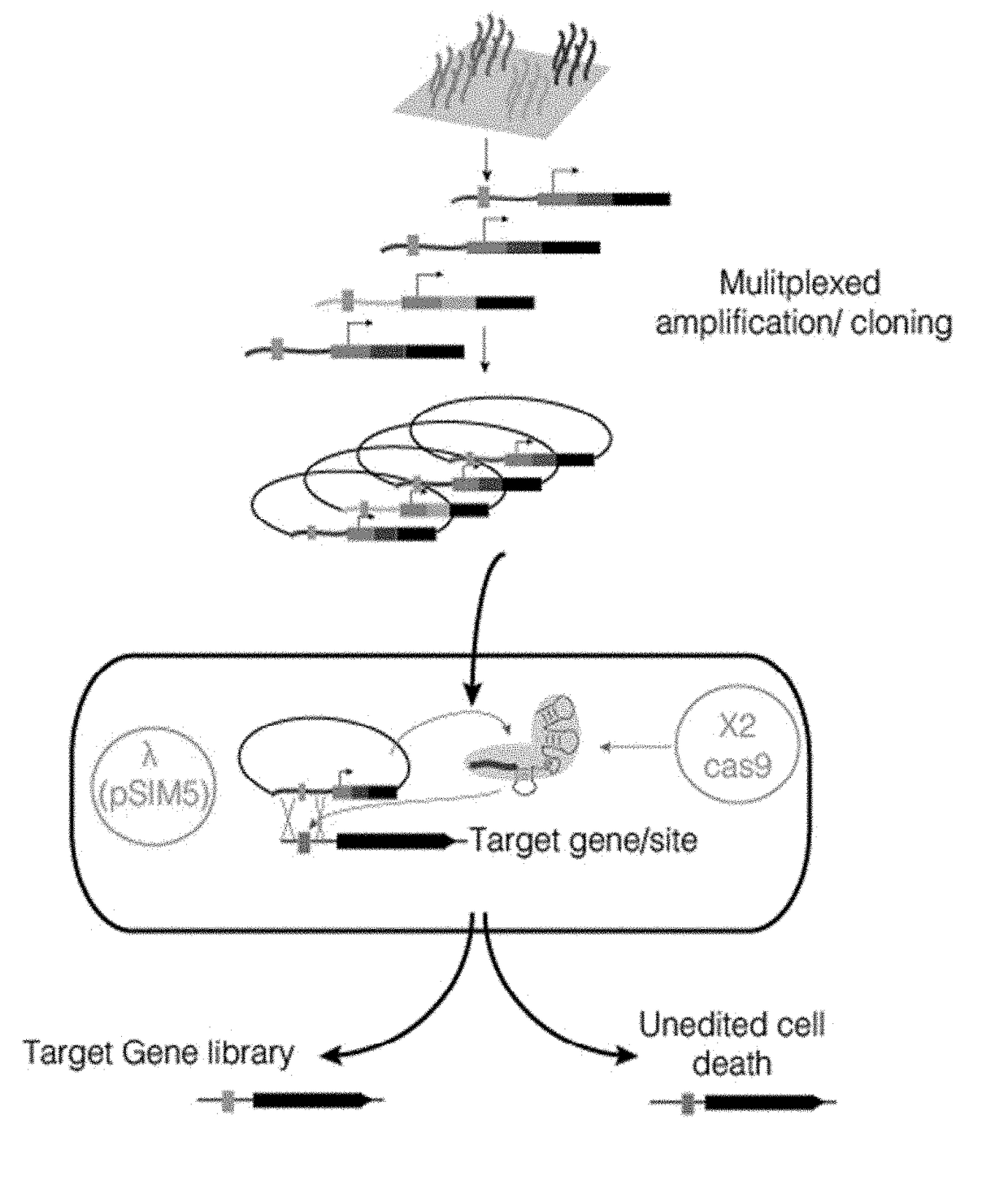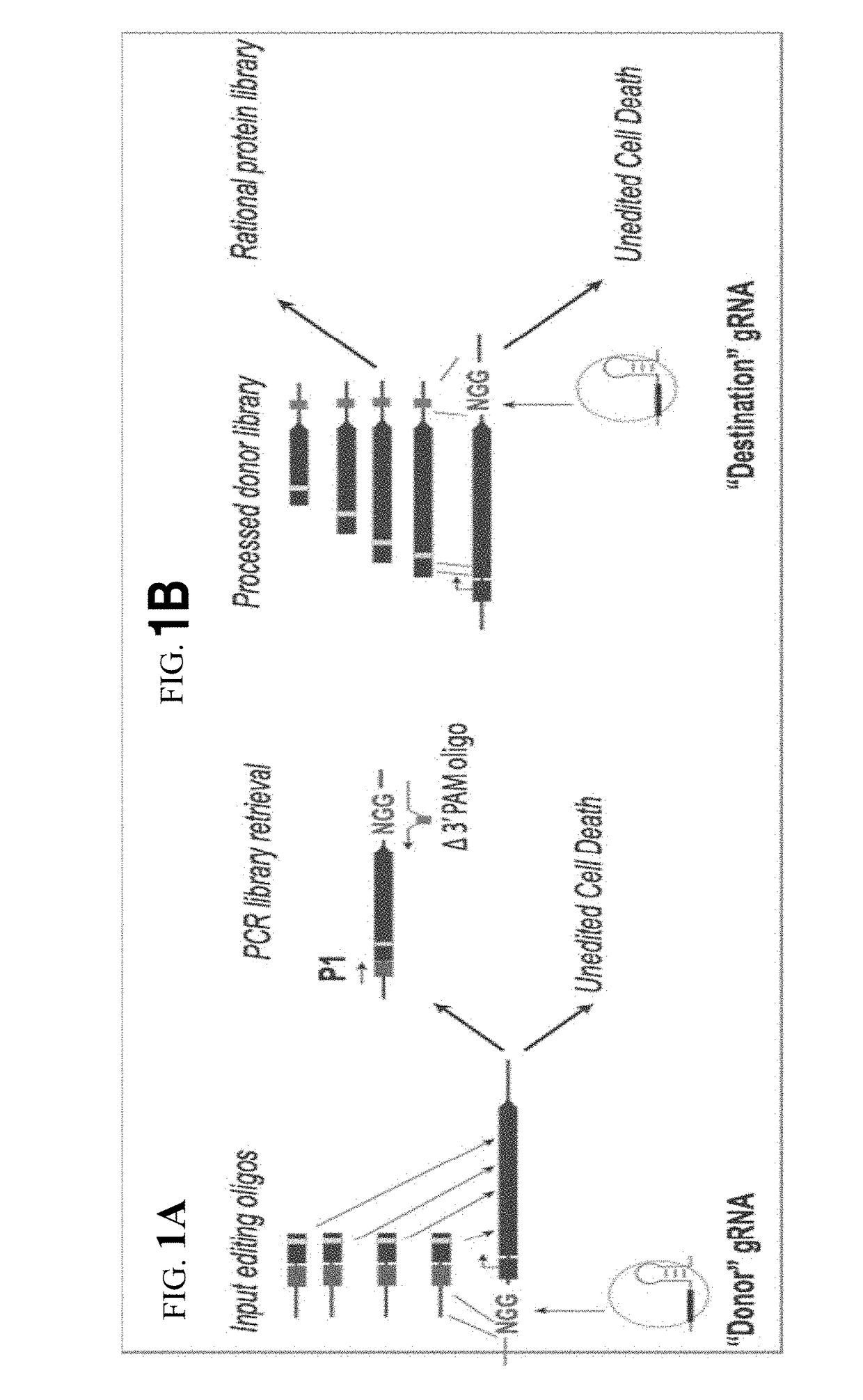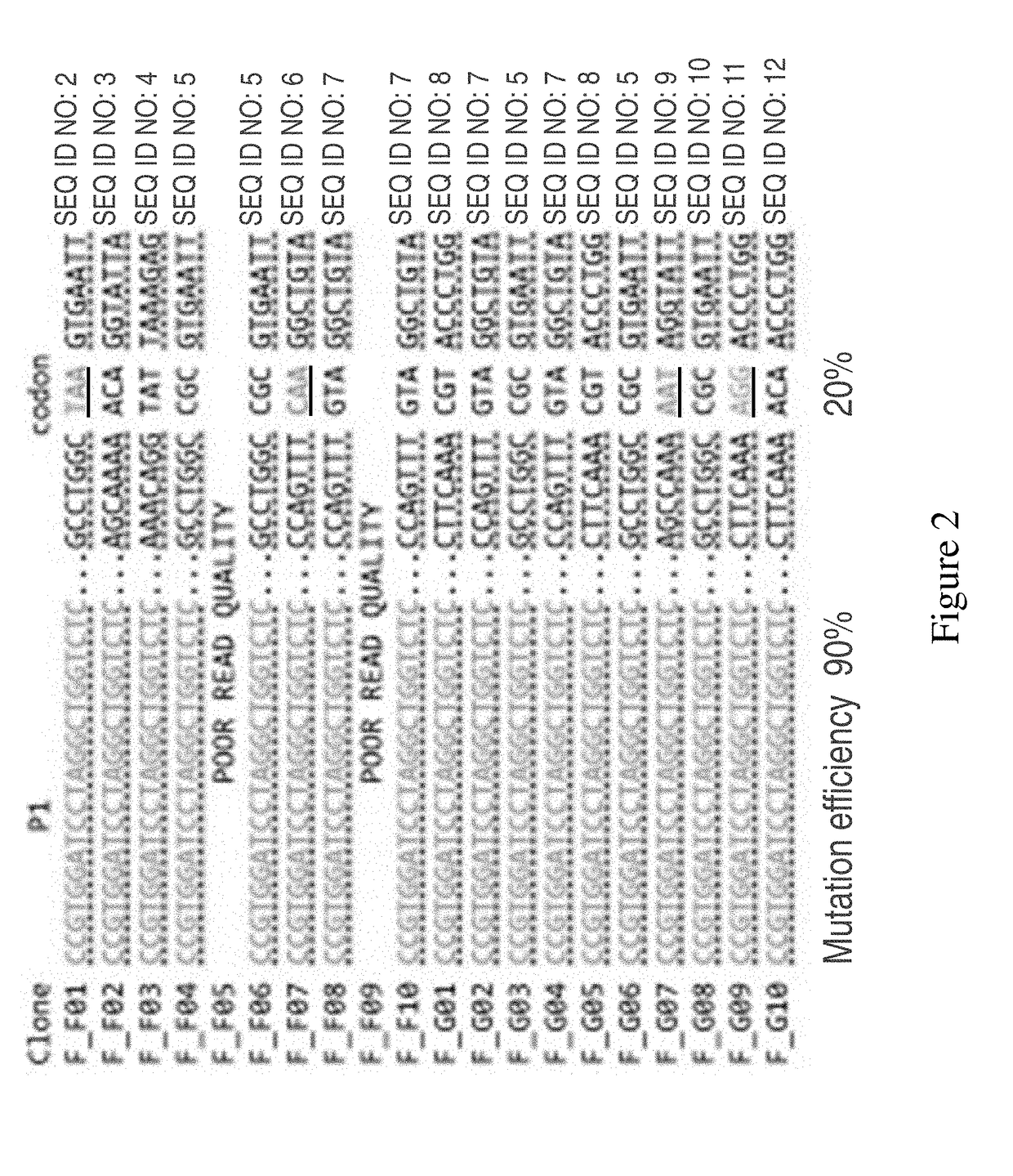Crispr enabled multiplexed genome engineering
- Summary
- Abstract
- Description
- Claims
- Application Information
AI Technical Summary
Benefits of technology
Problems solved by technology
Method used
Image
Examples
example 1
CARPE Method to Edit galK
[0099]The CARPE approach was-carried out on the galactokinase gene, galK, in the E. coli genome; there are many available assays to assess the activity of the gene product. The experiments were carried out using E. coli BW23115 parental strain and the pSIM5 vector (Datta et al. Gene (2008) 379:109-115) to mediate recombineering. The gene encoding Cas9 was cloned into the pBTBX-2 backbone under the control of a pBAD promoter to allow control of the Cas9 cleavage activity by addition of arabinose to the culture medium.
[0100]First, the ability to selectively incorporate of synthetic dsDNA cassettes (127 bp) was tested. The synthetic dsDNA cassettes were derived from NNR libraries that were constructed from degenerate primers or from rationally designed oligos synthesized as part of a 27,000 member library via microarray technology. In both cases, the oligonucleotides were designed to mutate the active site residues of the galK gene product as well as contain th...
example 2
CARPE Method to Target Essential Genes
[0102]In order to test the generality of the CARPE approach, the method was used, as described above, on a number of essential genes, including dxs, metA, and folA. Essential genes can be targeted using the gRNA design strategies (FIG. 3).
[0103]Data from CARPE experiments targeting the dxs gene also suggest that despite the gene disruption that occurs during the donor library creation, it is possible to effectively construct and retrieve the donor libraries within 1-3 hours post recombineering.
example 3
CARPE Method to Modulate Production of Isopentenol
[0104]The hunt for better biofuels for industrial manufacturing via bacterial production requires the ability to perform state of the art genome design, engineering, and screening for the desired product. Previously, we demonstrated the ability to individually modify the expression levels of every gene in the E. coli genome (Warner et al. Nat. Biotechnol (2010) 28:856-862). This method, termed trackable multiplex recombineering (TRMR), produced a library of about 8000 genomically-modified cells (˜4000 over-expressed genes and ˜4000 knocked down genes). This library was later screened under different conditions, which enabled deeper understanding of gene products' activities and resulted in better performing strains under these selections. TRMR allowed modification of protein expression for two levels (overexpressed and knocked down) but did not enable the modification of the open reading frame (ORF). Here, we aim to produce large lib...
PUM
 Login to View More
Login to View More Abstract
Description
Claims
Application Information
 Login to View More
Login to View More - R&D
- Intellectual Property
- Life Sciences
- Materials
- Tech Scout
- Unparalleled Data Quality
- Higher Quality Content
- 60% Fewer Hallucinations
Browse by: Latest US Patents, China's latest patents, Technical Efficacy Thesaurus, Application Domain, Technology Topic, Popular Technical Reports.
© 2025 PatSnap. All rights reserved.Legal|Privacy policy|Modern Slavery Act Transparency Statement|Sitemap|About US| Contact US: help@patsnap.com



